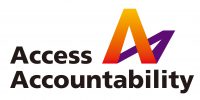What are the sources of satellite imagery?
How do you navigate existing opensource satellite imagery?
Arthur Green, trainer at our 2019 event in Croatia and geospatial scientist with expertise in environmental governance and human rights, created two videos showing how human rights documenters can access and analyze remotely sensed geospatial data for human rights monitoring. This is the first video of a two part series. For the second video in this series click here.
This training provides an overview to the possible ways of rapidly and easily accessing and analyzing remotely sensed geospatial data. There are many factors to consider in accessing and analysing geospatial data such as satellite images. Among the background knowledge necessary is an understanding of the basics of GIS and geospatial data (e.g. vector vs raster data types and formats, coordinate reference systems, electromagnetic spectrum, satellite orbits, etc.). It is highly recommended that anyone serious about doing this type of work get specialized training (i.e. a degree or similar) in the topic area. A good source for starting with this work, would be to go through the free course materials in the FOSS4G Academy.
This training was developed based on questions from the Transitional Justice Working Group on remote sensing data access and analysis, and focuses on the below areas of interest: Bashan Char and surrounding in Bangladesh.
Licensing & Contact
The materials are CC-BY-SA licensed created by Arthur Green and the Transitional Justice Working Group. These materials (including videos) can be distributed, used in trainings, and edited. Questions about the content should be sent to Dr. Arthur G. Green: arthur.green@mail.mcgill.ca
To request training, contact Access Accountability via the contact form.
